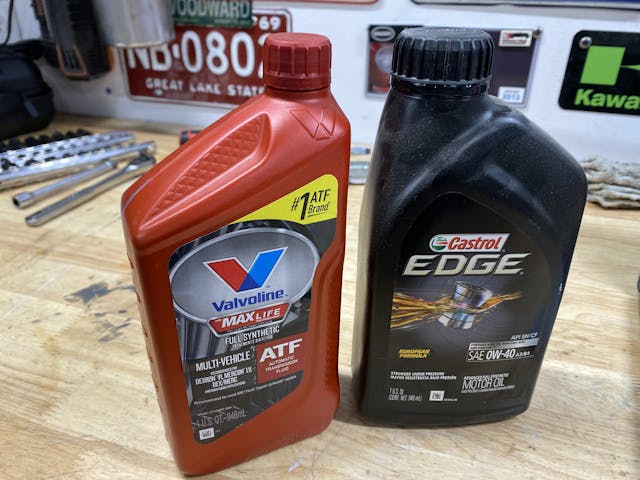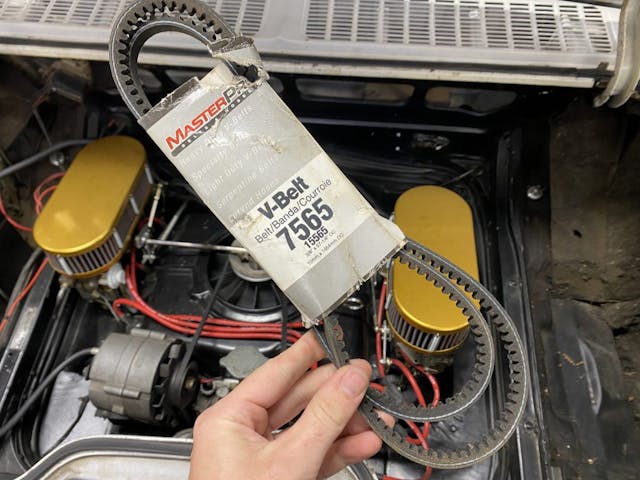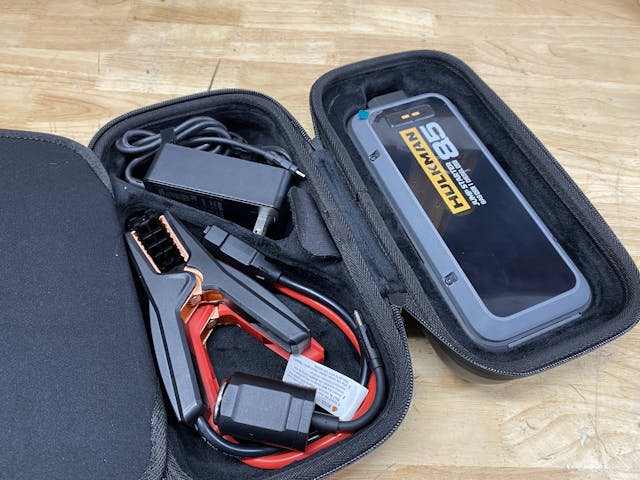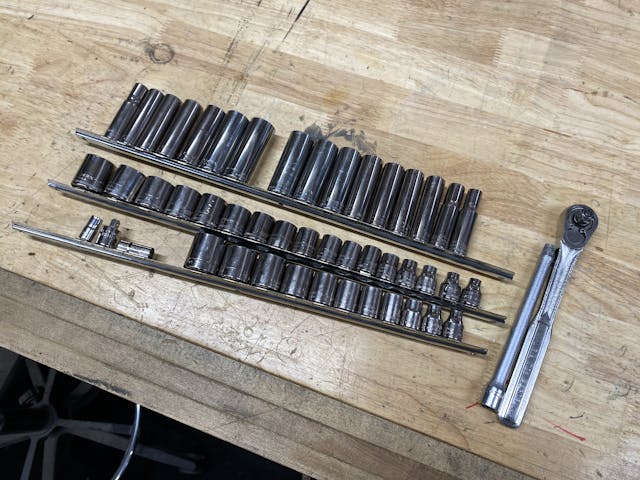Media | Articles
6 essentials for your travel toolkit
Don’t let the fall colors scare you into pickling your car for winter just yet. In many parts of the country, this is the best time to be out on the road. Color tours are spooling up all over the northeast, and as the temps drop in the southwest, vintage cars are returning to the roads—but that means more than a few will likely end up on the roadside too. Set yourself up for success and pack a toolkit to at least handle the basics.
Of course, for bigger trips or questionable cars, it makes sense to pack a big kit that could cover just about everything, but that is not right for every person or situation. As the old saying goes, the best time to build a toolkit for your vintage ride was yesterday and the second best time is right now. Even if you aren’t handy or do your own maintenance it is never known who might stop and offer help and without tools that good Samaritan is reduced to good thoughts. Here are six basic essentials for your travel toolkit.
Screwdrivers
Much of any car is assembled with slotted and Phillips-head screws, and even a precursory inspection often requires removing an access panel or cover. Sometimes a noise or vibration does not indicate immediate death for your car or engine, and after inspection you can determine if it is safe to carry on your way despite some part or piece misbehaving. A screwdriver can also act as a stethoscope in a pinch too, allowing you to track down a goofy noise for better diagnostics with less disassembly.
Pliers
Whether you need to deal with a stubborn spring hose clamp or moving a piece that got a little hot, pliers are the tool for the job. At bare minimum you should carry needle nose and slip joint pliers, as these will cover the vast majority of tasks on the roadside. Bonus points if your needle nose pliers have a cutting edge, as this will work for wiring repairs or stripping.
Fluids
We can’t live without water, and your engine can’t live without oil and coolant. They’re the fluids you’re most likely to lose and can still safely refill and continue your drive. Some folks will tell you to carry brake fluid, but if you’re losing brake fluid, that’s not something to top off and continue. Your brakes are a critical safety system that should be repaired properly by a pro, and your Hagerty roadside assistance card is going to be the best tool to use if the brake reservoir runs out while on the road.
Marketplace
Buy and sell classics with confidence
Belts
Most vintage engines run simple V-belt setups, but that system has been usurped by the serpentine belt. Relying on a chain parts store to have a variety of V-belts can be a big ask since they likely don’t sell many and thus only stock the most popular sizes. Belts are light and pack down small, so having the proper belts for your car is a no brainer.
Jump pack
Batteries go flat. It just happens sometimes, especially on vintage electrical systems in which small draws can go unnoticed until its too late. A jump pack can provide the juice to get your engine running again or keep it running in a real pinch. Also, most jump packs these days are small and light, while also packing more punch than ever. A bonus is it allows you to charge your phone or other critical accessories if you find yourself stranded and waiting for a tow.
Sockets and wrenches
Yeah, duh. It’s hard to take anything apart or service pieces without the ability to remove nuts and bolts. If you are handy and want to carry the bare minimum, start by looking under the hood and picking just the wrenches and sockets for jobs you are willing to do on the roadside. If in doubt, grab a full set of shallow and deep sockets for both SAE and metric, because you never know what hack might be hiding under the hood where someone previously mixed hardware. This also gives you the chance to be the hero in someone else’s story when you have the socket they need in order to leave the car show.
Bonus: Tool roll
Personally, I hate random things rolling around my car, doubly so if they make noise. A simple tool roll is cheap and allows you to keep all your trip-saving bits and pieces together. Tuck it all under a seat or in back with the spare tire, and rest easy each time you take the car out knowing that you’ve got at least the bare minimum needed to keep your trip on the road rather than the shoulder.
Is there something you’d add to a super basic toolkit? Leave your suggestion in the comments below.
Check out the Hagerty Media homepage so you don’t miss a single story, or better yet, bookmark it.




















Invariably the thing you don’t have with you is the thing that breaks. When I do rallies, I load the trunk with spares- carb kits, alternator, hoses, belts, distributor, fuel pump (2), water pump, spark plugs, plug wires, wheel cylinders (drum brakes of course) misc. nuts and bolts, clamps, duct tape, an assortment of special tools that may be needed, fuel filters and on and on- maybe 100 pounds of stuff- but figure if you have an unusual car you can either prepare or wind up at Advance Auto having the guy behind the counter give you that “glazed over look” when you ask for a distributor cap for a 1959 Elva. Boy Scout moto still holds up- preparation is the key, even if its inconvenient as all heck.
Duct tape
Has saved me more than once.
The car bill of sale in case you can’t fix it. Was a must for me driving from Camp Lejeune to South Jersey.
The car bill of sale in case you can’t fix it. Was a must for me driving from Camp Lejeune to South Jersey.
duct tape bailing wire & a utiliry knife
I think an essential item of any tool kit is a ball peen hammer (or two). I also would include both 6” and 10” crescent wrenches. No, they’re not ideal but if you don’t have the right size socket or combination wrench they’ll get you out of a pinch. Sometimes a coat hanger comes in handy too.
Duct tape and zip ties can help when in a pinch.
Throw in some wire, both iron wire for tying up loose parts and some misc. insulated wire for electrical problems and a good flashlight.
I road trip my 69 Pontiac GTO convertible pretty often. I carry a scissor jack so I don’t worry about hurting the bumpers if I have to change a tire, a cross lug wrench is a great idea. I don’t carry a lot of spares because the Pontiac is pretty easy to find parts for. I am going to upgrade my jump pack to a smaller one and I’m gonna buy one and send it to my niece who lives in Jacksonville, the subject of charging her cell phone during a power outage Came up last week.
Duct tape !!!!!!!!!!!!!!!!!!!!!!!!!!!!!!
I see others have mentioned duct tape, but I also carry the extreme temperature tape that moulds into itself, saved me from an exhaust leak! And don’t forget needle nose vice-grips.
While I like the tool roll, I have been a bag person for years. Back in the 80’s GM offered a rubber (or something rubber like) lined bag that served me well, and I still have but not in the car. I have sense moved on to a zippered tool pouch that I actually use for just about every minor repair. If I don’t have the tools to fix it in that bag I need it towed home or to a shop. I replaced a few engines with what’s in my tool bag, and it has a lot less tools in it than you might think. More tools is not as helpful as the correct tools.
A cell phone and AAA Platinum membership card.
At my age (59) I’m done fixing stuff on the side of the road. If it’s not in the shop I don’t want to work on it.
Preparation is everything, classic cars can be made reliable with proper care, and( preventative) maintenance.
Jeff
WD-40 and Duct Tape, “the redneck repair kit”
I also carry a Tyvek paint suit in my cars. They are cheap and can fit over and save your nice clothes from oil, grease and road grime while poking around the engine and especially while crawling under the car (often while replacing the then-broken exhaust hanger with bailing wire).
a Hickory mallet to whack the fuel pump on my MGB